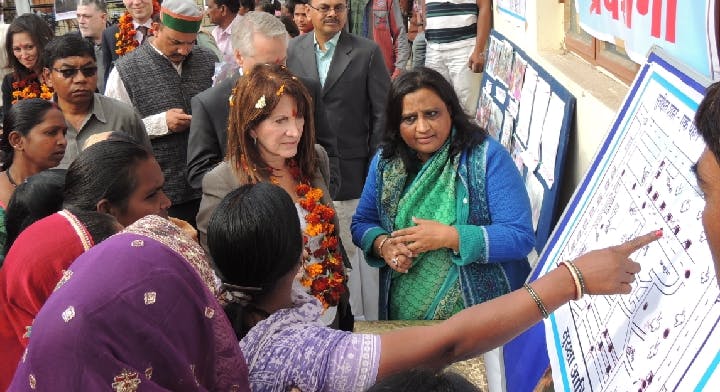In India, a smartphone app that aims to help women stay safe
– Isabel Larroca
Since the high-profile gang-rape of a medical student in Delhi, violence against women in India has gained international attention. A new Indian initiative aims to put safety information in the palm of your hand (literally).
On December 16, 2012, a 23-year-old woman was beaten and gang-raped on a private bus in Delhi, India. Just over two weeks later, she died from her injuries. The incident sparked demonstrations across the country, with thousands of protesters descending on India’s Parliament House and official presidential residence to speak out against the government’s failure to provide security for women.
A recent article in Gender & Development by Kalpana Viswanath and Ashish Basu presents a response to these concerns through an online initiative called SafetiPin. Launched in November 2013, SafetiPin’s two key premises are “that large-scale data collection can lead to change, and that safety will ensue when more people become engaged in the issue.” Taking advantage of the rapid spread of mobile phone technology, the approach puts the collection and distribution of information in the hands of the public through the use of a smartphone application. Rather than relying solely on police statistics, individuals can share their own experiences and assessments, which can then be shared with other users and outside stakeholders (including, for instance, researchers who want to compare these anecdotes with crime data).
The app functions as an adapted safety audit, a common method for determining if public spaces are unsafe, along with the characteristics that make them so. Users can evaluate an area by using a numerical system to rate parameters including lighting, visibility, openness of a space, the presence of other people, and the accessibility of public transit. Pins on a map mark locations where audits have been made — green pins indicate safer areas, while orange and red pins signal less safety.
The reliability of crowdsourced information is always a tricky business — one that, at least in this instance, comes with tangible risks (it’s not hard to imagine the app being used by a predator, in an extreme example). But for all the downsides, there are substantial benefits, accessibility and new insights into lived behavior chief among them. For better and worse, it allows information to spread much in the way it did before the age of apps; it’s word of mouth, just on a different medium.
One takeaway from SafetiPin’s audits is that the presence of security officers or a crowd had low correlation with a user’s sense of safety. By contrast, the presence of both men and women in a space, adequate lighting, and the ease of visibility to others had a high impact on whether or not users felt safe. Such information underlines a core feature of the app: accessibility. As the amount of data collected grows, key stakeholders gain a direct line to what people who are affected by safety issues are experiencing and suggest as solutions. SafetiPin’s discovery of a correlation between lighting and feelings of safety, for example, suggests a relatively straightforward safety measure: expanding (and maintaining) the number of streetlights.
At the same time, the app’s users are able to better inform their own safety-related choices, using the SafetiPin map to avoid dangerous areas, gaining awareness about points of concerns in their communities, and contributing information that can encourage meaningful action; users are simultaneously confronted with the reality of unsafe spaces and provided an opportunity to do something about them.
Ultimately, significant change with regards to overall safety for the women of India will be a collaborative effort; individuals, police, government officials, organizations, and many other stakeholders will need to share responsibility and contribute to safety efforts. Where SafetiPin can help is in getting these potential partners to start communicating with one another, and, in the process, bring violent crimes so often hidden under cover of darkness into the light.
* * *
The Source: Kalpana Viswanath and Ashish Basu, “SafetiPin: an innovative mobile app to collect data on women’s safety in Indian cities,” Gender & Development 27.1 (2015): 45-60.
Cover image courtesy of Flickr/UK in India
